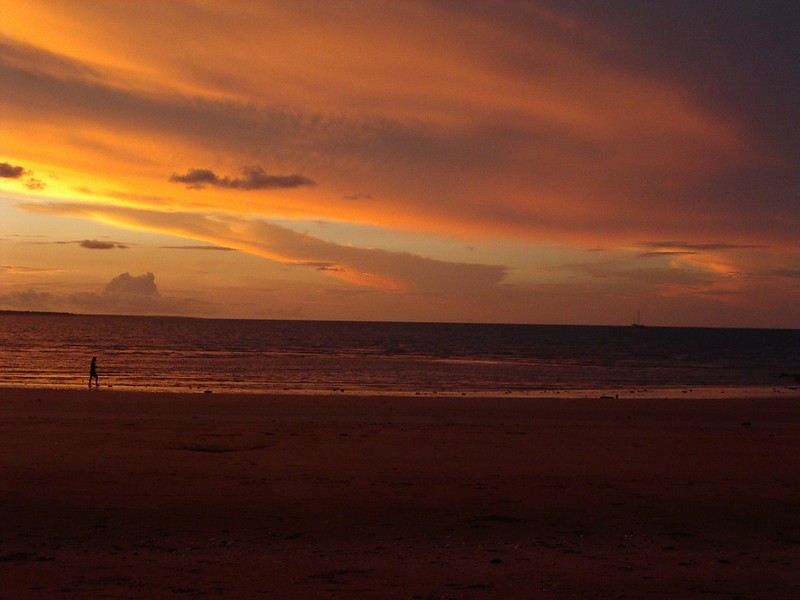
Orange anvils by Katja Weigel, distributed by EGU under a Creative Commons licence.
The anvils in this picture are not heavy steel or iron blocks but rather soft clouds coloured orange by the setting sun. The term is used to describe the upper part of a cumulonimbus or thunderstorm cloud that tends to spread out in an anvil shape as warm air bumps up against the bottom of the stratosphere (the atmospheric layer between 15-50 kilometres height).
Katja Weigel, a researcher at the Institute of Environmental Physics, University of Bremen, Germany took this picture at Mindil Beach in Darwin, Australia, shortly after sunset on 11 November 2005. She travelled there for the SCOUT-O3 (Stratospheric-Climate Interactions with Emphasis on the Upper Troposphere and Lower Stratosphere) campaign.
“The aim of the campaign was to observe and investigate transport into the stratosphere by strong tropical convection. The 11 November 2005 was the day before the research aircraft M55-Geophysika arrived in Darwin. Therefore, we did not take measurements in the clouds shown here but in and around similar clouds during the following weeks,” Weigel said.
More information about the SCOUT-O3 can be found in the campaign’s flyer, or in the special issue ‘SCOUT-O3 Tropics’ of the EGU journal Atmospheric Chemistry and Physics.
Imaggeo is the online open access geosciences image repository of the European Geosciences Union. Every geoscientist who is an amateur photographer (but also other people) can submit their images to this repository. Being open access, it can be used by scientists for their presentations or publications as well as by the press. If you submit your images to imaggeo, you retain full rights of use, since they are licenced and distributed by EGU under a Creative Commons licence.
